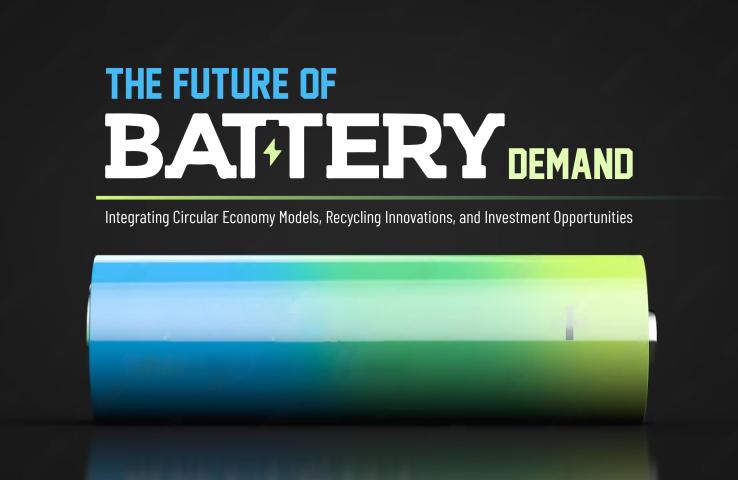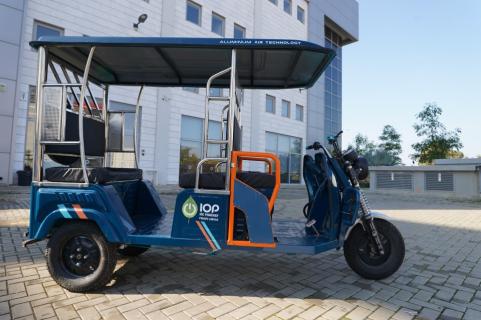As the world rapidly transitions towards renewable energy, electric vehicles (EVs), and smart devices, the demand for batteries is skyrocketing. This surge brings with it not only environmental challenges but also significant business opportunities. Understanding the future of battery demand involves exploring how circular economy models, recycling innovations, and strategic investment can shape a sustainable and profitable landscape.
The Growing Demand for Batteries
The global battery market is projected to grow exponentially, driven by the increased adoption of EVs, renewable energy storage solutions, and the proliferation of consumer electronics. Batteries are the cornerstone of this energy transition, but their production and disposal pose significant environmental challenges. The mining of raw materials like lithium, cobalt, and nickel is resource-intensive and environmentally damaging. Additionally, the disposal of used batteries contributes to hazardous waste, highlighting the need for sustainable solutions.
Integrating Circular Economy Models
A circular economy model focuses on designing products and systems that minimize waste and make the most of resources. In the context of batteries, this means extending the life cycle of materials through reuse, remanufacturing, and recycling. By adopting circular economy principles, companies can reduce their reliance on virgin materials, lower costs, and minimize environmental impact.
One of the key strategies in a circular economy is the second-life use of batteries. For instance, batteries that are no longer efficient enough for EVs can be repurposed for less demanding applications, such as energy storage for homes or businesses. This not only extends the battery’s life but also reduces the demand for new batteries.
Innovations in Battery Recycling
Battery recycling is a critical component of a circular economy. Traditional recycling methods have been inefficient and often fail to recover valuable materials. However, recent innovations are changing the landscape. Advanced recycling technologies, such as hydrometallurgy and direct recycling, offer higher recovery rates of materials like lithium, cobalt, and nickel.
Direct recycling is particularly promising as it allows for the recovery of battery components with minimal processing, preserving their value and reducing the need for energy-intensive refining processes. Companies are also exploring urban mining, where valuable metals are extracted from electronic waste, including batteries, to reduce the strain on natural resources.
Governments and industry players are recognizing the importance of recycling, with new regulations and initiatives aimed at increasing recycling rates. For example, the European Union’s proposed Battery Directive mandates higher recycling targets and the use of recycled materials in new batteries, driving innovation and investment in this space.
Investment Opportunities in the Battery Value Chain
The future of battery demand presents significant investment opportunities across the value chain. As the market expands, there will be increasing demand for sustainable battery materials, advanced recycling technologies, and second-life applications. Investors can capitalize on these trends by focusing on companies that are leading the charge in these areas.
Battery manufacturers that are adopting circular economy principles and investing in recycling innovations are well-positioned to benefit from the growing demand. Additionally, startups specializing in battery recycling technologies and second-life battery applications are attracting significant interest from investors seeking to tap into the sustainable battery market.
The shift towards a circular economy also opens up opportunities for mining companies that focus on sustainable practices, including urban mining and the ethical sourcing of raw materials. As consumers and regulators increasingly prioritize sustainability, companies that can offer environmentally friendly solutions will gain a competitive edge.
Moreover, venture capitalists and private equity firms are exploring opportunities in battery startups, particularly those involved in recycling innovations and second-life applications. These investments not only promise financial returns but also contribute to the development of a sustainable and resilient battery supply chain.
To understand how different countries are addressing the future of battery demand through circular economy models, recycling innovations, and investment opportunities, we must examine each of these areas in various regions worldwide. Here’s a detailed breakdown of how key countries and regions are shaping the future of the battery industry










